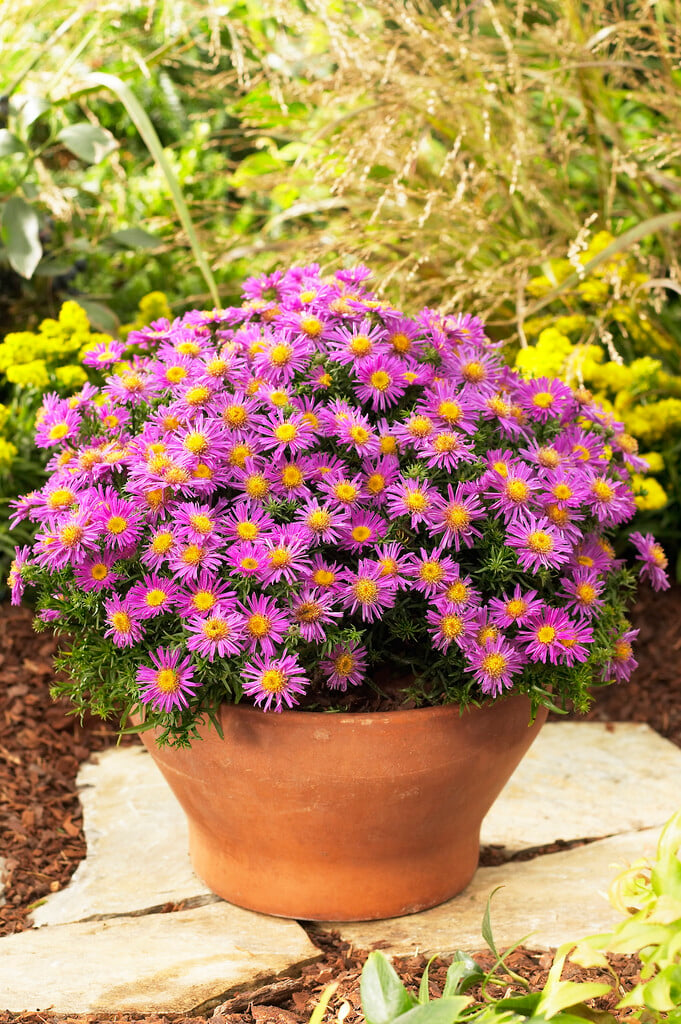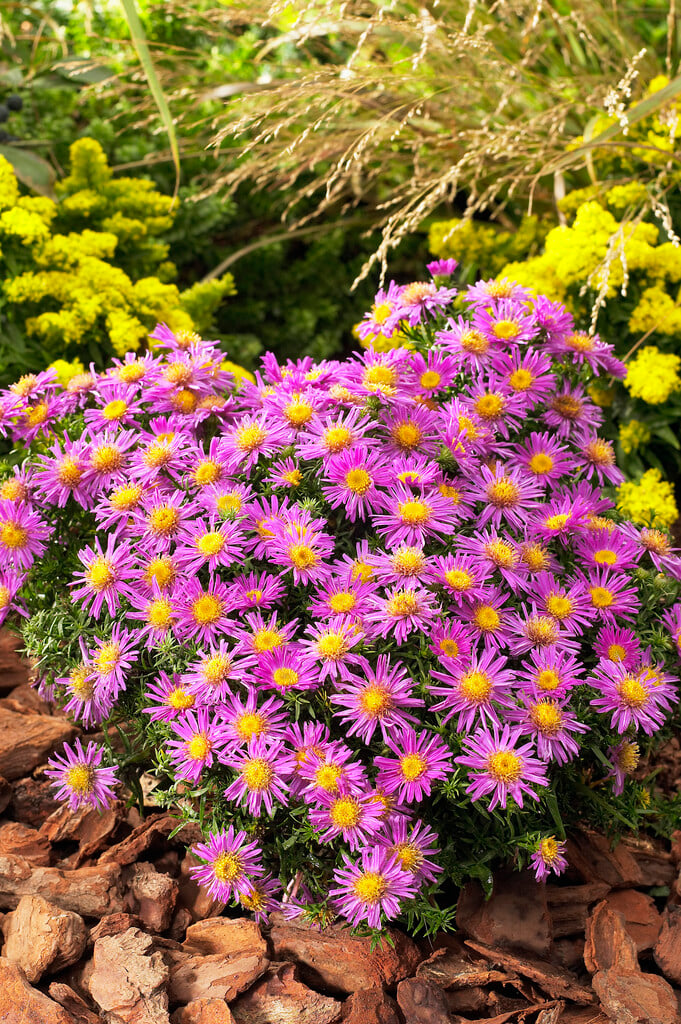Aster dumosus 'Alice Haslam'
Michaelmas daisy 'Alice Haslam'
A compact, spreading deciduous perennial with slim branches of lance-shaped mid green leaves. Large red to pink single daisy-like flowers are produced from summer until mid autumn.
Size
Ultimate height
0.1–0.5 metresTime to ultimate height
2–5 yearsUltimate spread
0.1–0.5 metresGrowing conditions
Moisture
Moist but well–drained, Well–drainedpH
Acid, Alkaline, NeutralColour & scent
| Stem | Flower | Foliage | Fruit | |
| Spring | Green | |||
|---|---|---|---|---|
| Summer | Pink Red | Green | ||
| Autumn | Pink Red | Green | ||
| Winter |
Position
- Full sun
- Partial shade
Aspect
East–facing or North–facing or South–facing or West–facing
Exposure
Exposed or Sheltered Hardiness
H7Botanical details
- Family
- Asteraceae
- Native to GB / Ireland
- No
- Foliage
- Deciduous
- Habit
- Clump forming
- Genus
Symphyotrichum includes around 90 species of annuals, biennials and perennials, mostly spread through the Americas, that were formerly included within the genus Aster. Leaves are simple, lance-shaped and entire, but it is their daisy-like flowerheads that they are grown for; central disc florets are typically yellow, surrounded by strap-shaped ray florets in shades of pink, blue, purple or white
- Name status
Unresolved
How to grow
Cultivation
Thrives in fertile, moist but well drained soil in sun or partial shade. Plants will benefit from mulching in autumn, and division every few years to maintain vigour. Will not tolerate waterlogging in winter. For more advice see aster cultivation
Propagation
Propagate by sowing seeds in a cold frame in spring or autumn. Divide in spring, replanting only vigorous young shoots
Suggested planting locations and garden types
- City and courtyard gardens
- Cottage and informal garden
- Coastal
- Wildlife gardens
- Gravel garden
- Flower borders and beds
Pruning
Prune by dead-heading regulary. Cut back to the ground in late autumn
Pests
May be susceptible to slugs and snails on new growth, and to aphids and leaf and bud eelworms
Diseases
Maybe susceptible to Fusarium wilt, grey mould, leafspot and powdery mildew
Get involved
The Royal Horticultural Society is the UK’s leading gardening charity. We aim to enrich everyone’s life through plants, and make the UK a greener and more beautiful place.

